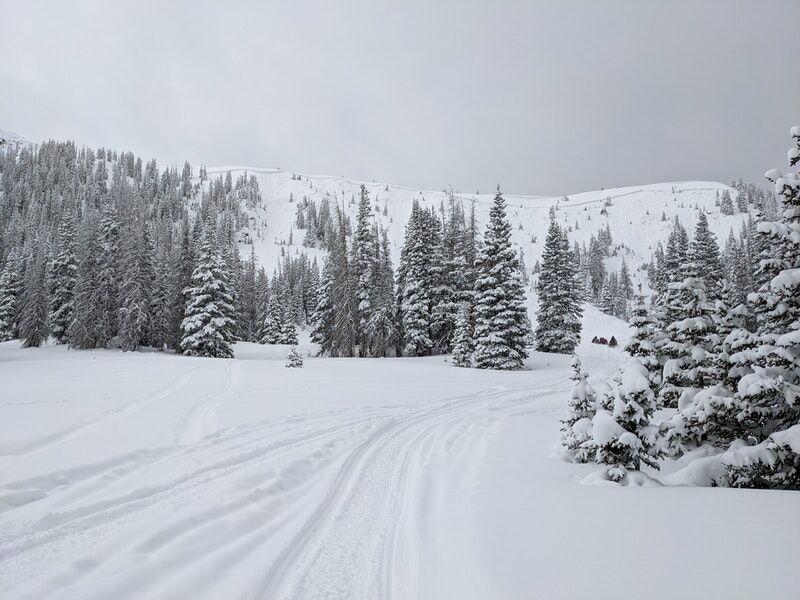Following a large-scale search and rescue effort in the mountains southeast of Rand, Colorado, a man was found deceased beneath approximately two feet of avalanche debris.
According to a report from the Colorado Avalanche Information Center, a large avalanche occurred near Ruby Mountain in Jackson County on Tuesday, February 16 at about 3 PM, catching two snowmobilers and fully burying one.
With four other snowmobilers present at the time of the slide, one of the riders that got caught was partially buried while sitting upright on his snowmobile. He escaped without injury. The second snowmobiler was off of his snowmobile at the time of the avalanche, swept downhill, and buried under two feet of snow. He did not survive.
Those on-site searched for the missing snowmobiler, later accompanied by official search and rescue teams. The missing snowmobiler was not wearing an avalanche beacon at the time of the accident, complicating the effort. Eventually, rescue teams found the missing snowmobiler deceased after an avalanche dog alerted teams to his approximate location. His body was recovered on Wednesday afternoon.
The fatal avalanche released at approximately 11,400 feet of elevation, creating a large and powerful R4, D3 slide on a northeast facing slope. The slope angle was 37 degrees, which can result in very risky terrain when avalanche danger is present.
Condolences go out to those impacted by this tragic accident.
This is the 11th avalanche death of the 2020-2021 snow season in Colorado, including eight deceased skiers, one snowboarder, and two snowmobilers. This compares to six total avalanche fatalities during the 2019-2020 snow season and eight during the 2018-2019 snow season.
Avalanche danger has been high during recent days and weeks in Colorado as waves of snow continue to hit the state. Avalanche danger is currently rated as ‘considerable’ in all backcountry zones statewide, a three of five on the risk scale.
Prior to entering the backcountry, heed the warnings posted on the Colorado Avalanche Information Center website and be highly aware of the forecast and weather alerts shared by the National Weather Service. Utilize all recommended safety gear every time and practice using it prior to when a life-saving effort is underway.
This content was originally published here.
